I’ve almost finished my work on Oswald Wirth’s presentation of the Great Book of Nature, or the Philosophical and Hermetic Apocalypse, and will soon be publishing the first ever English translation, with an expansion from the SATE as The Hermetic Apocalypse.
In the year or so I’ve been working on (err, chipping away at) the book, I’ve been looking at various hermetic art either for pleasure, reference or study, and with a better understanding, or perhaps a more initiated eye, I’ve increased my appreciation for any Liber Mutus found in alchemical or esoteric figures and symbols of old. Admittedly my favourite kind of this emblematic art is still to be found in the art of TARO (you can read about the hypnotist Oswald Wirth creating the first initiatory Tarot deck and his writing of the Book of Thoth in this post introducing him).
Anyway, for the last few years there has been silence on the site (for the most part), and in the act of changing that, I wanted to compose a meditation on silence. Ironically, yet not at all, let’s call this ramble…
Silence is Golden.
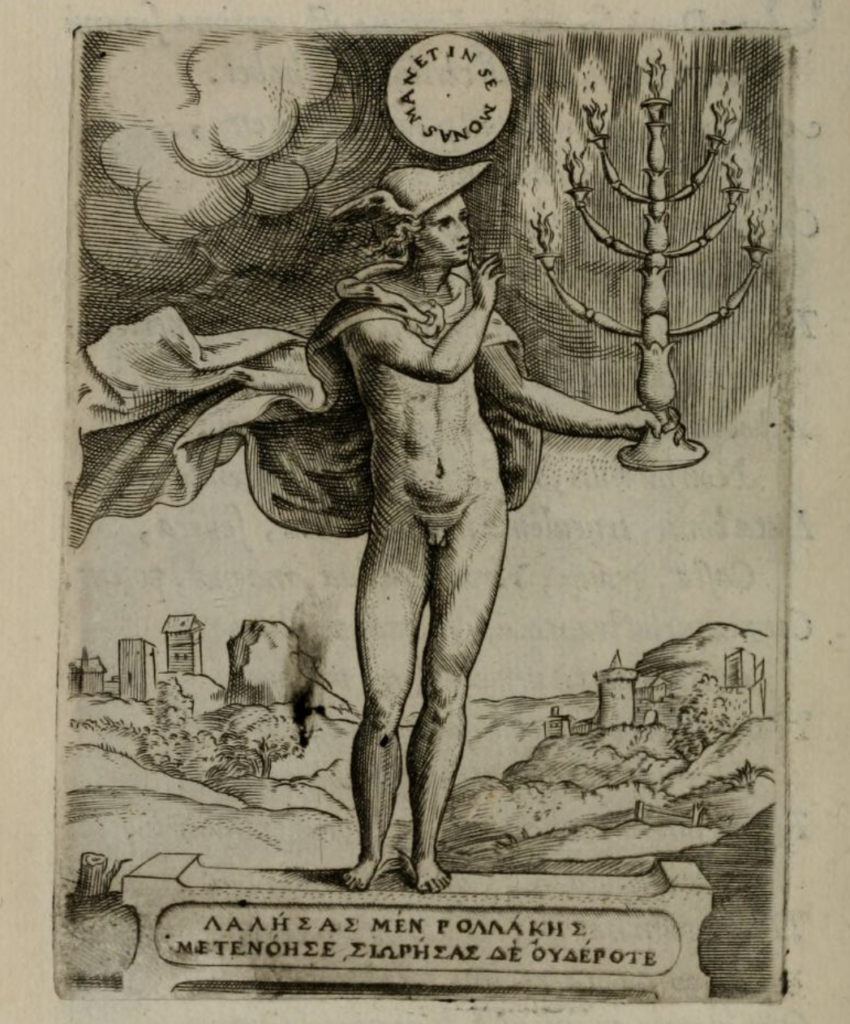
The image above is taken from the book Symbolicarvm quaestionvm de vniverso genere qvas serio lvdebat libri qvinqve by Achille Bocchi (Achilles Bocchius) (1488 – 1562). Bocchi’s doctrine was that man is bound to the earth and to the contingencies of his life, but that with the help of divine grace his mind can reach the contemplation of God, provided with a “very syncerissima mente” (a very sincere, pure mind), without external practices and in the silence of solitude.
Before looking at the figure, it is worth noting that Bocchi commissioned the construction of Palazzo Bocchi, which he had placed two inscriptions on its façade: the first in Latin, taken from the first epistle of Horace: Rex eris, aiunt, si recte facies, or “You will be king, they say, if you act justly”, and the other in Hebrew, taken from Psalm 120: “Deliver my soul, O Lord, from lying lips, and from a deceitful tongue.” The palace became the seat of the Hermathena Academy, which he had founded years earlier, its name a fusion of Hermes and Athena, alluding to the whole of human knowledge, both rational and hermetic.
Bocchi’s book Symbolicarvm quaestionvm de vniverso contains an image and then has a Latin verse and commentary to accompany the image. The one we are looking at now is the image I have placed at the top of this post, which is a Study for Harpocrates (Silentio Deum Cole, “Worship God in Silence”). It is symbol LXII which shows Hermes wearing a winged helmet, naked except for a cloak, making the sign of silence with his right hand, while his left hand holds up a seven-branched candelabra with seven burning flames — the central one, the sun, is the tallest, while the other six are divided, one on each side, into three descending branches. Above Hermes’ head is the sun as a circle of light in which is written: “MONAS MANET IN SE,” which has been translated by some as “trust only in yourself” and by others as “the good/the unity remains in itself”, the latter having the most correct weight in my opinion. Under the feet of Hermes we find a stone pedestal which reads: “ΛAΛHΣAΣ MEN POΛΛAKHΣ METENOHΣE ΣIΩPHΣAΣ ΔE OYΔEPOTE” (Speaking often you have regretted. Being silent you have never regretted).
I will give you the verse that accompanies the image in a moment, but first I want to examine the symbolism in the image more closely. Hermes represents Mercury, the alchemical Mercury. Mercury is a symbol of the Three in One, as in the name Hermes Trismegistus (a syncretic combination of Hermes and Thoth). Three in one, one in three, thrice great, Hermes Trismegistus comes from Ἑρμῆς ὁ Τρισμέγιστος, “Hermes the Thrice Greatest”; or in classical Latin: Mercurius ter Maximus. It is said that he was called Trismegistus because of his praise of the Trinity, saying that there is one divine nature in the Trinity. The caduceus is a symbol of Hermes, and the twin serpents entwined about the winged staff or wand are the basis of the astronomical symbol of Mercury ☿.
Now, just as we can look at another and see their depth, width and height, three aspects in one form, so one can look at oneself or another and see the composition of the alchemical Sulphur, Salt and Mercury. Here’s another figure that I discovered in the Hermetic Apocalypse, but in colour, as I had designed it to be presented on the cover of the book. It represents Sulphur, Salt and Mercury, or the Tria Prima of the alchemists, as well as the four elements and the seven alchemical planets/metals:

The candelabra held by Hermes shows the Sun in the centre and a balance between the salts of the metals in the Great Work. Another figure found in the Hermetic Apocalypse can show us what this illustrates, which Wirth labels the “Mystical Description of the Great Work”:

The explanation provided with this figure is, “that it is necessary to draw the salt, or the crystals of lead ♄, and unite them with those of silver ☽︎. Then take those of tin and unite them with those of quicksilver. Those of iron, unite them with those of copper. Of all these marriages another is made, and the Sun is in the centre.”
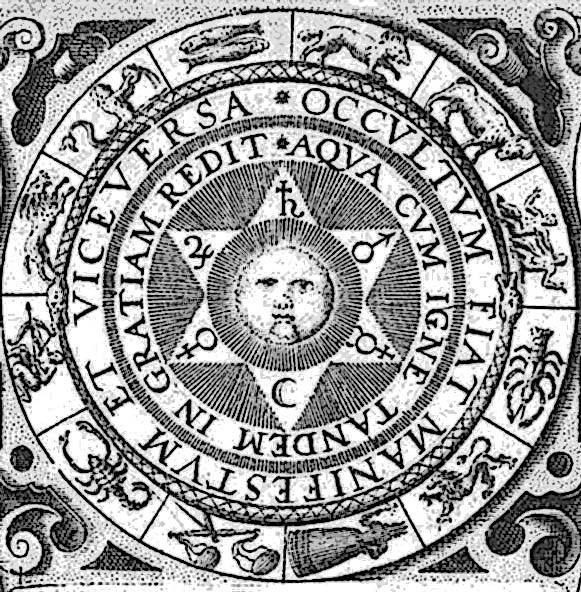
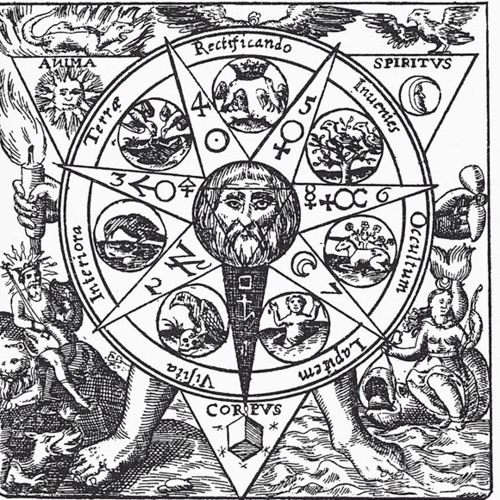
We will surely examine some of the images above, and make a post about VITRIOL and the AZOTH another time, though this is not the place to continue on here… Back to the Silentio Deum Cole, or the study of Harpocrates… It was mentioned earlier that there is a Latin text accompanying each image in Bocchi’s book of emblems. Beside the image of Hermes with his candelabra is the accompanying text and its rough translation:
| SAEPE LOQVI NOCVIT, NVNQVAM NOCVIT TACVISSE. Menti, Virtuti, & Fidei delubra dicamus: Esse sita in nobis cernimus illa tamen. Cur capitolina Tritonia Pallas in arce Sedem habuit? caput hæc vrbus, & orbis erat. Mens decus est hominis, divine mentis imago, Non vllis vnquam sensibus exposita. Noscere qui cupit hanc ipsum se noscat oportet In primis, pharium, & consulat Harpocratem. REVOCANDA MENS A SENSIBVS, DIVINA CVI MENS OBTIGIT. Reuocare mentem qui potest à sensibus, Et cogitationem ab afuetudine Abducere, facilé ille præstat omnibus: Nam mente viuit, atq viuit vt Deus, Qui corpore ac sensibus, brutum vt pecus. Hermetis hanc sententiam ter maximi Qui cords habebit, esse non potest miser. | OFTEN SPEAKING HAS HARMED, NEVER HAS SILENCE. Let us dedicate temples to Mind, Virtue, and Faith: we see that they are situated in us, nevertheless. Why did Tritonian Pallas have her seat on the Capitoline hill? This city was the head of the world. The mind is the glory of man, the image of the divine mind, never exposed to any senses. Whoever desires to know it must first know himself, and consult the Pharion god and Harpocrates. THE MIND MUST BE WITHDRAWN FROM THE SENSES, TO WHOM THE DIVINE MIND HAS REACHED. Whoever can withdraw his mind from the senses, and lead his thought away from habit, he easily surpasses all: for he lives with his mind, and lives as a god, who with his body and senses, lives as a brute beast. Whoever will have this sentence of thrice-greatest Hermes in his heart, he cannot be miserable. |
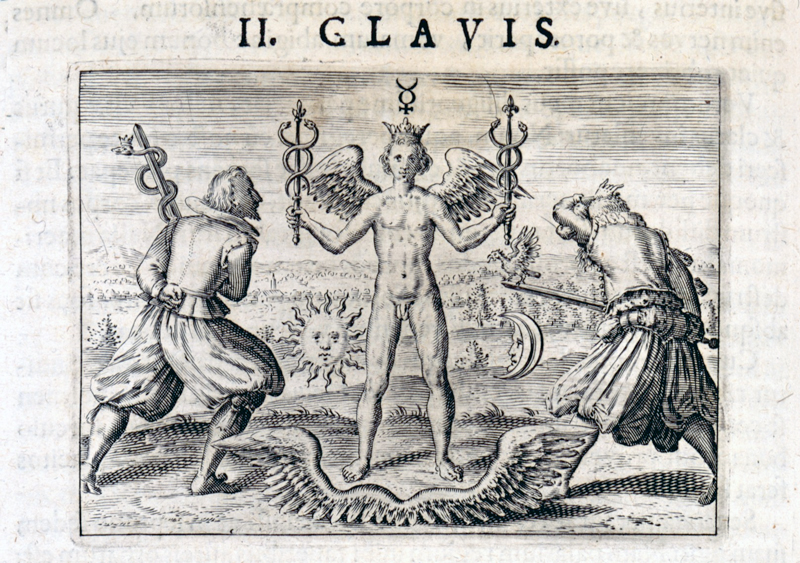
Proverbs 17:28 says “Even a fool who keeps silent is considered wise; when he closes his lips, he is deemed intelligent.” Speech cannot be viewed so one-dimensionally, as Crowley writes in Liber B Vel Magi: “In the beginning doth the Magus speak Truth, and send forth Illusion and Falsehood to enslave the soul. Yet therein is the Mystery of Redemption. By His Wisdom made He the Worlds; the Word that is God is none other than He. How then shall He end His speech with Silence? For He is Speech.” (An appropriate reflection here could be on Heru-ra-ha, and its passive aspect in Hoor-pa-kraat — Harpocrates).
Aleister Crowley provides an alchemical poem that is the perfect way to put a bow on this post for now. This poem can be found in Liber Turris vel Domus Deo sub figurâ XVI (or Book of the Tower or House of God under figure XVI). The XVI, or sixteen, here represents the sixteenth card of the Tarot, called The Tower. (Éliphas Lévi had written that the tower represented on this card was probably the Tower of Babel – the meaning here is obvious, the destruction of the Tower of Babel resulted in the loss of the Universal Language). Crowley attributes the Tower card to the letter Peh, which means mouth, and the card bears the symbol of the planet Mars, and in his Qaballah is placed on the path connecting the sphere of Mercury in Hod and the sphere of Venus in Netzach. On Crowley’s design of the card, the Eye of Shiva or Horus is positioned at the top, while the jaws of Dīs belches flames at the bottom. (Dīs is Dīs Pater, associated with death and the underworld, as mineral wealth such as gems and precious metals came from underground. Dīs Pater is also known as Pluto, the god of the underworld).
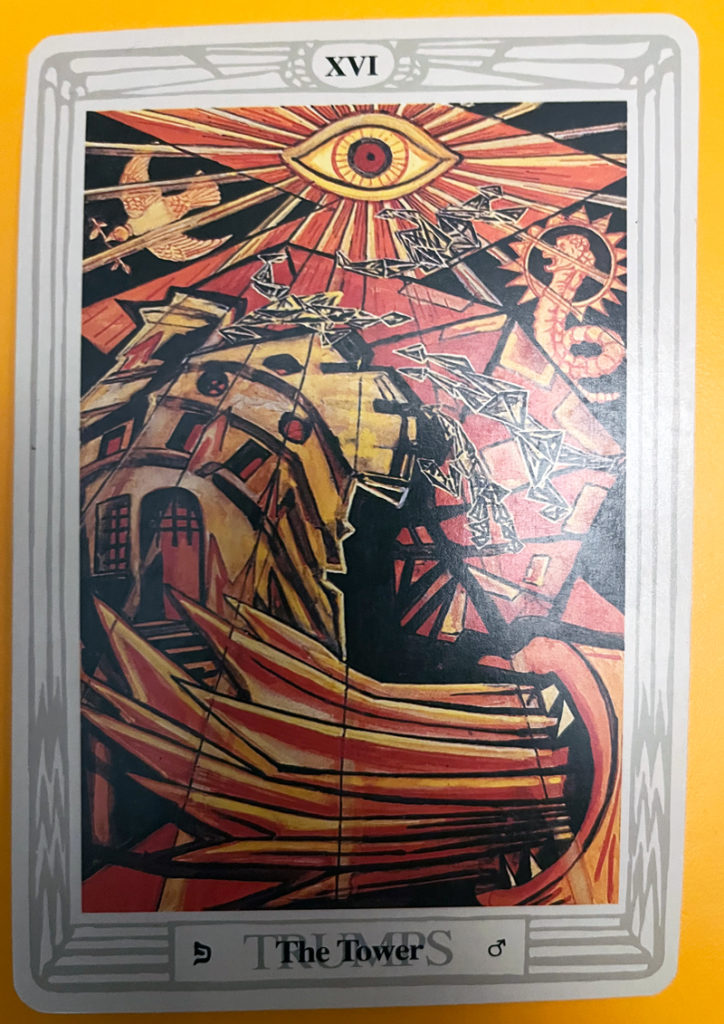
The verse I wish to share here from in Liber Turris vel Domus Deo sub figurâ XVI by Crowley reads:
Sulphur, Salt, and Mercury:
Which is master of the three?
Salt is Lady of the Sea;
Lord of Air is Mercury.
Now by God’s grace here is salt
Fixed beneath the violet vault.
Now by God’s love purge it through
With our right Hermetic dew.
Now by God wherein we trust
Be our sophic salt combust.
Then at last the Eye shall see
Three in One and One in Three,
Sulphur, Salt, and Mercury,
Crowned by Heavenly Alchemy!
To the One who sent the Seven
Glory in the Highest Heaven!
To the Seven who are the Ten
Glory on the Earth, Amen!

Let’s conclude this article with a few words from the wise Éliphas Lévi:
“Everything is possible to him who wills only what is true! Rest in nature, study, know, then dare; dare to will, dare to act and be silent!
The SATE Presents: The Hermetic Apocalypse by Oswald Wirth, coming soon!

